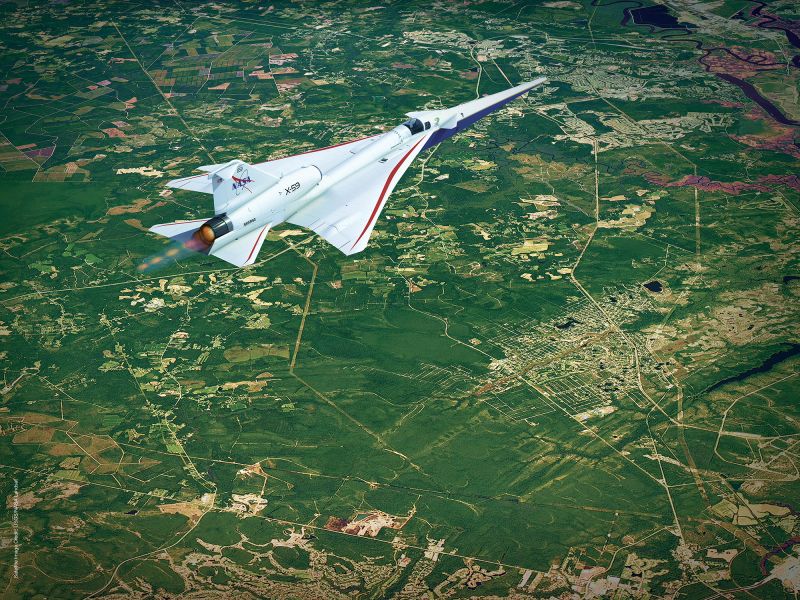
NASA's Quest to Transform Sonic Booms into 'Thumps'

NASA is working to transform sonic booms into quieter 'thumps' with the goal of paving the way for a new generation of supersonic aircraft. This article explores how the X-59 aircraft is designed to achieve quieter supersonic flight, the impact of sonic booms, and the potential changes in regulations for supersonic travel.
The Impact of Sonic Booms
Sonic booms are part of the reason why there are no supersonic passenger planes flying today. The loud, explosion-like bang caused by a plane flying faster than the speed of sound can be startling and even crack windows. This has been a limiting factor for the success of supersonic aircraft, including the Concorde, which was restricted to subsonic speeds when flying over land or near coastlines.
How the X-59 could look in flight.
Current international regulations still limit the speed of commercial transport over land to below Mach 1 to avoid the disturbance of sonic booms over inhabited areas. However, NASA's program called Quesst aims to transform the boom into a 'thump,' which could lead to a new generation of quieter supersonic aircraft.
The X-59 Aircraft: A New Approach to Supersonic Flight
The X-59 aircraft, developed by NASA and Lockheed Martin Skunk Works, is designed to achieve quieter supersonic flight. Its unique shape and aerodynamic features are intended to prevent the coalescing of shockwaves, resulting in a much quieter sonic profile compared to previous supersonic aircraft.
The X-59 is expected to produce just 75 decibels of sound when traveling at supersonic speeds, significantly lower than the Concorde's 105 decibels. Its sleek design and strategic placement of aerodynamic surfaces contribute to spreading out the shockwaves, making it sound like distant thunder or a low thump rather than a loud boom.
Changing Regulations and the Future of Supersonic Travel
NASA plans to conduct a series of test flights with the X-59 over residential communities in the US to gauge public response to the noise of supersonic flight. The goal is to confirm that a 75-decibel sonic thump will be acceptable and gather data for presentation to regulatory authorities.
The plan is for the X-59 will take off for the first time this year.
The successful demonstration of quieter supersonic flight by the X-59 could lead to a change in regulations, opening up the skies for a new generation of supersonic aircraft. This could potentially cut flight times in half for routes that are currently not permitted for supersonic travel, making high-speed travel more accessible to the general public.















